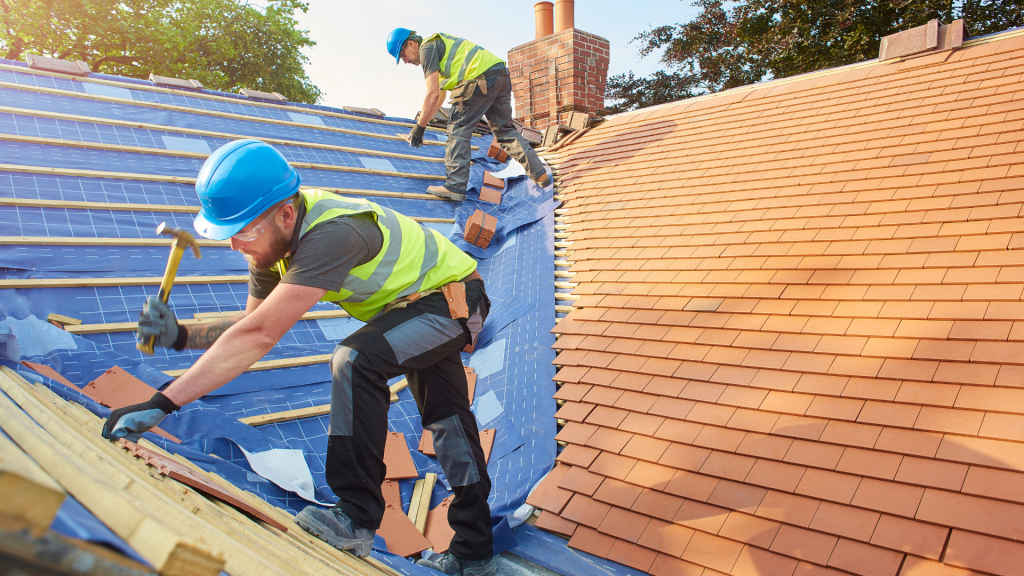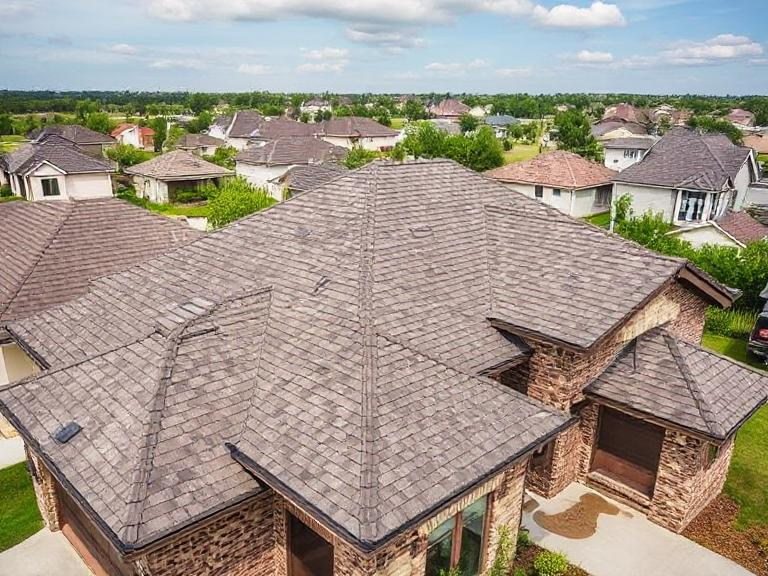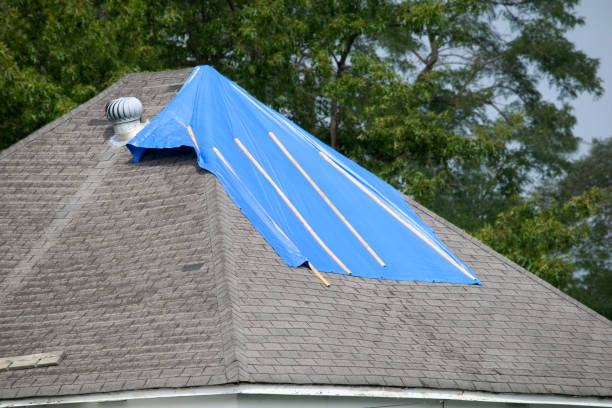Cost-Effective Ways to Cover a Damaged Roof
Introduction
A roof is not just a protective cover for your home; it serves as the first line of defense against the elements. When storm damage occurs, it can lead to extensive issues if not addressed promptly. Whether it's a minor leak or significant structural damage, finding cost-effective solutions is vital. This article delves into cost-effective ways to cover a damaged roof, discussing options such as emergency tarping, working with roofing contractors, and more.
Table of Contents
- The Impact of Weather on Roof Integrity
- Identifying Types of Roof Damage
- What is Emergency Tarping?
- Benefits of 24-Hour Roof Tarping Services
- How to Choose the Right Roofing Company
- Questions to Ask Your Roofing Contractor
- Materials Needed for DIY Roof Repair
- Step-by-Step Guide to Temporary Fixes
- Navigating Insurance After Storm Damage
- Tips for Filing a Successful Claim
- Evaluating Whether to Repair or Replace Your Roof
- Planning for Future Roof Maintenance
- Budgeting for Emergency Roof Repairs
- Affordable Alternatives to Traditional Roofing
Understanding Storm Damage
The Impact of Weather on Roof Integrity
Weather conditions can wreak havoc on roofs, leading to leaks and structural damage. Heavy rain, snow accumulation, and strong winds contribute significantly to wear and tear over time.

Common Causes of Storm Damage:
- High winds can lift shingles or tiles.
- Heavy rain can lead to leaks through existing cracks.
- Snow and ice can create added weight on roofs.
Assessing roof replacement Wylie the extent of storm damage should be your first step after experiencing severe weather events.
Identifying Types of Roof Damage
Recognizing the type of damage is crucial for determining effective repair methods. Here are common types:
- Missing Shingles: Often caused by high winds.
- Leaks: Usually result from worn-out materials.
- Structural Issues: Indicate significant storm impact requiring urgent attention.
Understanding these damages helps homeowners communicate effectively with roofing contractors about necessary repairs.
Emergency Tarping Solutions
What is Emergency Tarping?
Emergency tarping is a temporary solution used primarily after storms to protect homes from further damage until permanent repairs can be made.
Key Benefits:
- Prevents water infiltration.
- Minimizes interior damage.
- Provides peace of mind during recovery.
Benefits of 24-Hour Roof Tarping Services
Sometimes, emergencies don’t wait for regular business hours. That's where 24-hour roof tarping services come into play:

These services are essential after severe weather events like hurricanes or heavy thunderstorms.
Finding Local Roofing Contractors
How to Choose the Right Roofing Company
Not all roofing companies are created equal! When searching for local roofing contractors, consider:
Factors To Evaluate:
- Licensing and insurance verification.
- Reviews and testimonials from previous clients.
- Experience with storm damage roof repairs specifically.
Choosing the right company ensures quality work at competitive rates without cutting corners.
Questions to Ask Your Roofing Contractor
Before committing, ask potential contractors these questions:
These inquiries will help you assess their professionalism and reliability.
DIY Temporary Repairs
Materials Needed for DIY Roof Repair
For those who are handy, temporary fixes might be feasible until professional help arrives:
Essential Materials:
- Tarps (preferably waterproof).
- Duct tape or heavy-duty adhesive.
- A ladder (ensure it's stable).
Having these materials ready allows you to act quickly in emergency situations without waiting too long for help.
Step-by-Step Guide to Temporary Fixes
If you're considering some DIY work, follow these steps carefully:
While these fixes won't last forever, they are sufficient until you can schedule emergency roof repair services with a contractor.
Insurance Claims for Storm Damage
Navigating Insurance After Storm Damage
Dealing with insurance claims can feel daunting after experiencing storm damage roof repair needs:
Steps To Follow:
This organized approach will streamline your interaction with insurance agents and speed up claim processing times!

Tips for Filing a Successful Claim
To improve your chances of success in getting coverage:
Long-Term Solutions Post-Damage
Evaluating Whether to Repair or Replace Your Roof
Once immediate concerns are addressed, you'll need to ponder whether it's best just fixing up what's already there or investing in an entirely new system altogether:
Signs You Might Need a Replacement:
- Frequent leaks even after repairs have been made multiple times!
- Age – roofs typically last around 20 years; anything older may not be worth saving anymore!
Consultation with reputable roofing companies will provide insight into which route suits your situation best based on material longevity versus repair costs moving forward!
Planning for Future Roof Maintenance
Regular maintenance plays an integral role in preventing future problems before they escalate into costly projects down the line:
Key Areas To Focus On:
Establishing this routine ensures longevity well beyond just immediate crisis management but cultivates lasting home protection overall!
Cost Considerations in Roof Repair
Budgeting for Emergency Roof Repairs
When disaster strikes unexpectedly, having financial resources set aside becomes critical! Here are practical budgeting tips tailored around potential emergency scenarios:
Steps To Create A Solid Plan:
1) Assess how much savings you currently possess dedicated solely towards home repairs — aim ideally at least 10%–15% annually dedicated exclusively towards unforeseen circumstances like natural disasters!
2) Gather estimates from multiple local contractors specializing specifically in storm-related damages — this gives insight into average market rates while also helping identify fair pricing trends based upon competition levels within given areas!
3) Explore financing options offered via various organizations & lenders designed specifically around residential improvements—many programs exist targeting low-interest loans designed explicitly towards covering unexpected costs incurred due directly resulting from adverse weather conditions affecting residences across regions nationwide!
These strategies ensure adequate preparedness while minimizing stress during challenging moments ahead when needing urgent assistance most urgently!
Affordable Alternatives To Traditional Roofing
If replacement emerges as necessary yet proves costly upfront? Not all solutions require breaking bank accounts; consider alternative roofing materials offering similar durability without hefty price tags attached!
Examples Include:
- Metal roofs — known longevity exceeding traditional asphalt-shingle varieties often comes hand-in-hand lower maintenance requirements & energy efficiency benefits too!
- Rubber membranes — an eco-friendly option addressing leaks efficiently while remaining highly adaptable fitting diverse architectural styles seamlessly throughout neighborhoods everywhere across America!
Research thoroughly prior choosing method best suited tailored needs ensuring maximum returns investments made long-term down road!
FAQs About Cost-Effective Roof Repairs
Q1: What should I do immediately after my roof gets damaged?
A1: First thing's first: secure any exposed areas using tarps if possible until professionals arrive—this mitigates additional water intrusion causing further harm inside structures themselves!
Q2: How much does emergency tarping typically cost?
A2: Costs vary depending upon size affected area—but generally range anywhere between $150-$500 based upon service providers selected along geographic locations involved as well!
Q3: Is my homeowner's insurance likely covering damages incurred due storms?
A3: Yes—but always double-check specific policy details covering “acts-of-God” events like thunderstorms/hurricanes impacting properties directly; terms differ widely between carriers themselves often warrant reviewing regularly alongside annual renewals!
Q4: Should I attempt major repairs myself?
A4: While some minor fixes might be achievable—consult professionals regarding complicated matters involving structural integrity before undertaking large-scale renovations yourself unless certified beforehand adequately trained handling risks involved properly indeed!!
Q5: How often should I have my roof inspected?
A5: Ideally twice yearly—once pre-winter season approaching & again following spring thaw ensuring no lingering threats remain present throughout changing climates surrounding homes ultimately protecting families residing therein much longer ultimately safeguarding investments made overall too!!
Conclusion
In conclusion, covering a damaged roof doesn't have to break the bank if handled strategically through various cost-effective means available today—from timely interventions such as emergency tarp usage all way navigating insurance claims effectively post-storm-induced havoc endured homeownership journeys alike! By understanding both immediate necessities alongside long-term planning strategies implemented proactively ahead time helps safeguard investments ensuring peace mind living sheltered under durable protective coverings built withstand whatever nature throws our way next… Because remember folks—a solid rooftop equals security within four walls we call “home”!